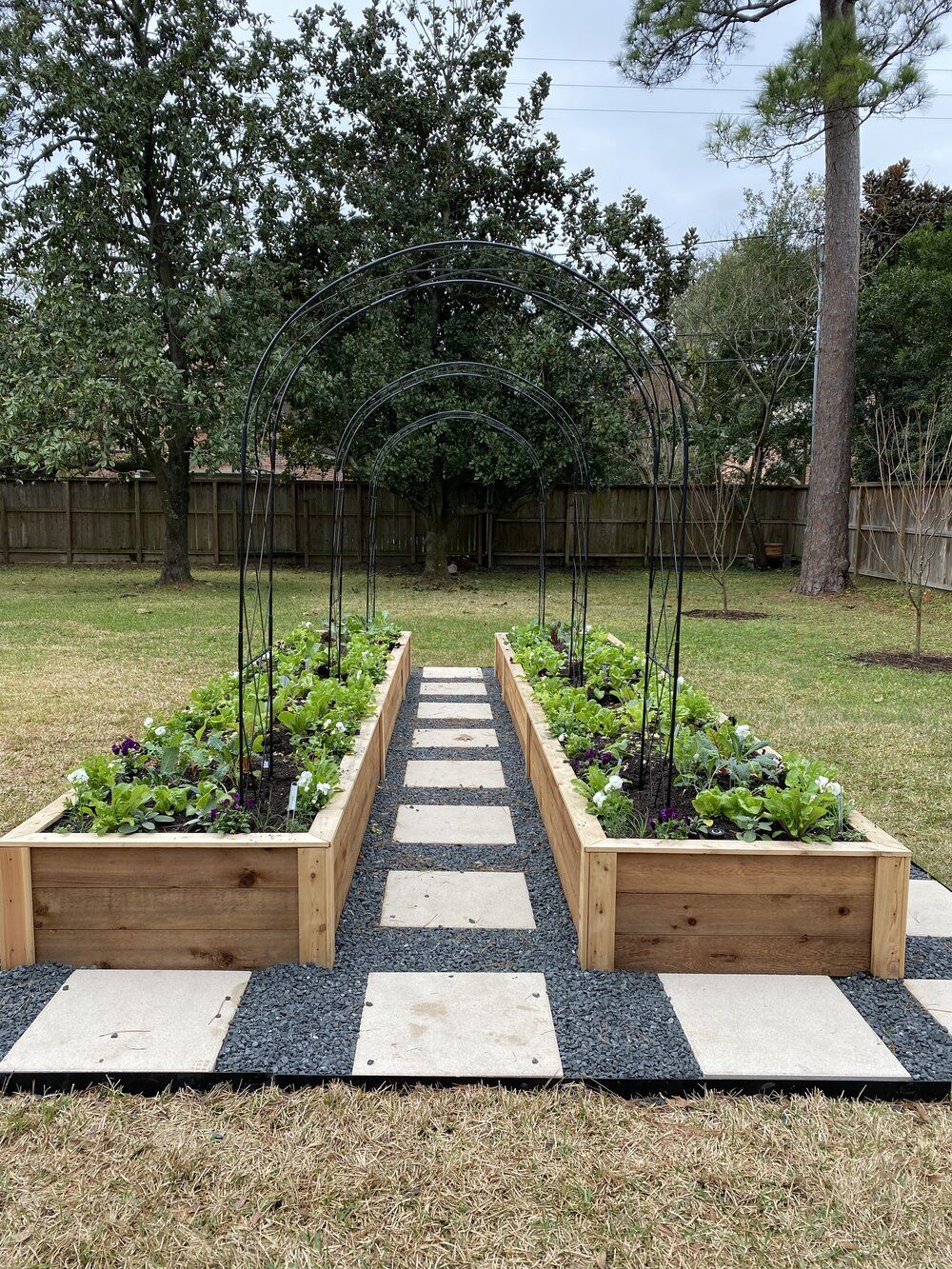Struggling to find the perfect hillside gardening ideas for your outdoor space? Gardening on a slope presents unique challenges, but with the right techniques and creative solutions, you can transform your hillside into a stunning garden paradise.
In this article, we will explore various aspects of hillside gardening, from plant selection to terracing and maintenance tips. Whether you’re dealing with a gentle incline or a steep slope, we’ve got you covered with expert advice and inspiration for making the most of your hilly landscape.
Hillside gardening presents an opportunity to create a visually striking and dynamic garden that adds interest and beauty to your outdoor space. With careful planning and consideration, you can turn even the most challenging slope into a thriving garden oasis. From selecting the right plants to implementing effective irrigation and drainage solutions, there are numerous factors to consider when designing a successful hillside garden.
In this article, we will delve into the essential elements of hillside gardening, offering practical tips for creating terraces, utilizing retaining walls, incorporating pathways and steps, adding decorative elements, and more. Whether you’re a seasoned gardener looking for new ideas or a beginner seeking guidance for tackling a hillside garden for the first time, our comprehensive guide will help you navigate the ins and outs of hillside gardening with confidence.
Choosing the Right Plants for Hillside Gardening
When it comes to hillside gardening, choosing the right plants is crucial for the success of your garden. The unique conditions of a sloped landscape, such as poor soil drainage and increased exposure to sunlight and wind, require careful consideration when selecting plants. Here are some tips for choosing the right plants for your hillside garden.
Consider the Soil
One of the most important factors to consider when choosing plants for hillside gardening is the type of soil on your slope. Since water tends to drain quickly on hillsides, it’s essential to select plants that can tolerate both wet and dry conditions. Additionally, considering erosion control is important, so look for plants with deep roots that can help stabilize the soil.
Choose Native Plants
Native plants are well-adapted to the specific growing conditions of your region, making them an excellent choice for hillside gardening. They are often more resistant to pests and diseases and require less maintenance compared to non-native species. Research which native plants thrive in hillside environments in your area and incorporate them into your garden design.
Varying Heights and Textures
To create visual interest in your hillside garden, choose a variety of plant heights and textures. Incorporate taller plants at the top of the slope and cascading or low-growing plants towards the bottom. This not only adds aesthetic appeal to your garden but also helps with soil retention and erosion control.
By carefully considering these factors when choosing plants for your hillside garden, you can create a beautiful and sustainable landscape that thrives in its unique environment. With careful planning and selection of appropriate plant species, you can enjoy a vibrant and flourishing garden on even the steepest slopes.
Creating Terraces for Hillside Gardening
When it comes to hillside gardening, creating terraces is essential for preventing erosion and maximizing space. Terracing involves creating level areas on a slope, which not only adds visual interest to the landscape but also makes it easier to plant and maintain your garden. There are several methods for creating terraces, including using timber, stone, or concrete blocks. Each material has its own aesthetic appeal and level of durability, so it’s important to consider your specific needs and preferences.
One popular method for creating terraces in hillside gardening is through the use of retaining walls. Retaining walls not only provide structural support to hold back soil but can also be used to create distinct levels for planting different types of vegetation. They come in a variety of materials such as wood, concrete, or natural stone, allowing you to choose the best option that complements the overall design of your garden.
In addition to preventing erosion and improving the aesthetic appeal of your hillside garden, terracing can also help with irrigation and drainage. By creating level steps along the slope, water is more likely to soak into the ground rather than running off downhill.
This helps prevent soil erosion and ensures that plants receive adequate moisture. When designing terraces for hillside gardening, it’s important to consider how water will flow through each level and plan accordingly with proper irrigation systems and drainage solutions.
| Aspect | Data |
|---|---|
| Benefits of Terracing | Preventing erosion, maximizing space for planting |
| Materials | Timber, stone, concrete blocks |
| Connection with Retaining Walls | Retaining walls can provide structural support and create distinct levels for planting different vegetation |
Utilizing Retaining Walls for Hillside Gardening
Retaining walls are an essential element in hillside gardening, as they serve to hold back soil and prevent erosion while creating level planting areas. When designing a hillside garden, it’s important to consider the use of retaining walls to maximize space and create a visually pleasing landscape.
There are various materials that can be used for retaining walls, including stone, concrete blocks, wood, and even recycled materials. The choice of material will depend on the aesthetic you want to achieve and the functionality of the retaining wall.
One effective way to utilize retaining walls in hillside gardening is by creating terraced garden beds. These terraces not only provide flat surfaces for planting but also add dimension and visual interest to the overall garden design. Properly constructed retaining walls can help prevent erosion by holding back soil and directing water flow. Additionally, incorporating different levels using retaining walls opens up opportunities for creative plant arrangements, adding depth and texture to the garden.
When building retaining walls for hillside gardening, it’s crucial to ensure proper drainage to avoid water buildup behind the wall. This can be achieved through strategic placement of drainage pipes or gravel backfill behind the wall.
It’s also important to consider any local building codes or regulations when constructing retaining walls, as there may be specific requirements based on the height and location of the wall. By carefully planning and implementing retaining walls in hillside gardening, you can transform a challenging slope into a beautiful and functional garden space.
Irrigation and Drainage Solutions for Hillside Gardening
Hillside gardening requires special attention to irrigation and drainage due to the unique challenges that come with gardening on a slope. Proper irrigation is essential to ensure that plants receive adequate water, while effective drainage is necessary to prevent erosion and water logging. One of the key hillside gardening ideas is to incorporate irrigation and drainage solutions into the overall design of the garden.
To address irrigation needs, consider installing a drip irrigation system that delivers water directly to the base of plants, minimizing runoff and waste. This system can be easily adjusted to accommodate the varying water needs of different plants across different levels of the hillside. Additionally, using mulch around plants can help retain moisture in the soil, reducing the frequency of watering while also preventing erosion.
In terms of drainage, strategically placed swales and berms can help redirect excess water away from plants and prevent soil erosion. Utilizing rocks or gravel in certain areas can also aid in controlling water flow on the slope. By carefully planning and implementing these irrigation and drainage solutions, hillside gardens can thrive despite their challenging terrain.
| Irrigation Solutions | Drainage Solutions |
|---|---|
| Drip Irrigation System | Swales and Berms |
| Mulch | Rocks or Gravel |
Incorporating Pathways and Steps in Hillside Gardening
When it comes to hillside gardening, incorporating pathways and steps is not only functional but also adds to the aesthetic appeal of the garden. Steep slopes can be challenging to navigate, so creating pathways and steps is essential for easy access and maneuverability throughout the garden. In this section, we’ll explore different ideas for designing pathways and installing steps in hillside gardens.
Pathway Materials
One of the first decisions to make when creating pathways in a hillside garden is choosing the right materials. For a natural look that blends into the landscape, consider using materials such as gravel, mulch, or wood chips. These materials allow for water drainage and are also relatively easy to install on uneven terrain. Alternatively, concrete pavers or stone slabs can add a more formal and structured look to the garden.
Stepping Stones and Stairs
To navigate steep slopes in a hillside garden, incorporating stepping stones or stairs is essential. Stepping stones can be placed strategically to create a meandering pathway up or across the hillside, while stairs provide a more direct route. When designing stairs, take into account the natural flow of the land and consider incorporating curves or switchbacks for a more organic feel.
Lighting for Pathways
Incorporating lighting along pathways and steps not only enhances visibility but also adds an enchanting ambiance to the garden during evening hours. Solar-powered lanterns or low-voltage landscape lighting can be installed along pathways and staircases to ensure safe navigation and create magical nighttime views of the garden.
Incorporating well-designed pathways and steps in a hillside garden not only improves accessibility but also enhances its overall beauty. Whether you opt for natural materials blended seamlessly into the environment or choose more structured elements like stone slabs and formal stairs, thoughtful design choices will elevate your hillside gardening experience while showcasing your chosen plantings.
Adding Decorative Elements to Hillside Gardens
When it comes to hillside gardening, adding decorative elements not only enhances the beauty of the landscape but also adds functionality and charm to the space. Here are some creative ideas to incorporate decorative elements in your hillside garden:
- Stone Features: Consider adding stone elements such as a retaining wall, rock garden, or stone pathway to add visual interest and structure to your hillside garden. Using natural stones can help create a more organic and rustic look, while carved or polished stones can add a touch of elegance.
- Water Features: Incorporating a water feature such as a small pond, fountain, or waterfall can create a tranquil and soothing atmosphere in your hillside garden. The sound of running water can also help mask any noise from nearby streets or neighbors, providing a peaceful escape.
- Sculptures and Artwork: Adding sculptures, statues, or other artwork can serve as focal points in your hillside garden. Choose pieces that complement the overall theme and style of your garden, whether it’s classical and formal or whimsical and eclectic.
- Lighting: Installing outdoor lighting can extend the enjoyment of your hillside garden into the evening hours. Consider using soft LED lighting along pathways, uplighting trees or shrubs, or hanging string lights to create a magical ambiance.
By incorporating these decorative elements into your hillside garden design, you can transform your outdoor space into a beautiful and inviting retreat that reflects your personal style and creativity. Whether you prefer a serene oasis or a lively gathering space, there are endless possibilities for enhancing the natural beauty of your hillside gardening area.
Maintenance Tips for Hillside Gardens
Maintaining a hillside garden can be challenging, but with the right care and attention, it can continue to thrive and bring beauty to your outdoor space. Here are some maintenance tips to keep your hillside garden looking its best:
1. Pruning and Trimming: Regular pruning and trimming of plants in your hillside garden is essential to keep them healthy and prevent overgrowth. Use appropriate tools such as pruning shears or hedge trimmers for this task.
2. Weed Control: Weeds can quickly take over a hillside garden if left unchecked. Regularly inspect the garden for any weeds and remove them promptly. Consider using mulch or ground cover plants to help suppress weed growth.
3. Soil Erosion Prevention: Hillside gardens are susceptible to soil erosion, especially during heavy rainfall. To prevent this, consider using erosion control methods such as netting, planting cover crops, or installing retaining walls made of natural stone or timber.
4. Fertilizing: Provide necessary nutrients to your plants by fertilizing the soil in your hillside garden. Choose a slow-release fertilizer suitable for the types of plants you have, and apply it according to the manufacturer’s instructions.
5. Irrigation Maintenance: Ensure that your irrigation system is working properly to provide adequate water to your plants while preventing erosion. Check for leaks, clogs, or other issues in the irrigation system regularly.
By following these maintenance tips for your hillside garden, you can ensure that it remains healthy and beautiful for years to come. With proper care and attention, you can enjoy the unique charm of a flourishing hillside garden in your own backyard.
Conclusion
Hillside gardening offers an opportunity to create stunning and unique landscapes that go beyond traditional garden designs. By carefully selecting the right plants, creating terraces, utilizing retaining walls, and implementing proper irrigation and drainage solutions, you can transform a challenging hillside into a beautiful garden space that is both functional and visually appealing.
Incorporating pathways and steps not only adds practicality to the garden but also enhances its aesthetic appeal. By carefully planning and designing these elements, you can make navigating through your hillside garden an enjoyable experience. Additionally, adding decorative elements such as sculptures, fountains, or outdoor lighting can further elevate the beauty of your hillside garden.
It is important to note that maintaining a hillside garden requires diligence and regular upkeep. From controlling erosion to managing weeds, investing time in maintenance will ensure the long-term health and beauty of your hillside garden.
With careful planning and attention to detail, you can create a stunning hillside garden that brings joy and beauty to your outdoor space for years to come. Whether you have a small slope or a steep incline, there are numerous hillside gardening ideas that can help you create a unique and thriving landscape.
Frequently Asked Questions
How Can I Landscape My Hillside Cheap?
Landscaping a hillside can be done cheaply by using native plants that are well-suited to the natural conditions of the slope. By choosing low-maintenance plants and incorporating mulch and ground cover, you can create an attractive landscape without breaking the bank.
What Is the Best Plant to Plant on a Slope?
When planting on a slope, it’s important to choose erosion-resistant plants with deep root systems. Groundcovers like creeping juniper or periwinkle are excellent choices as they help stabilize the soil. Grasses such as fescue or buffalo grass also work well on slopes due to their ability to hold soil in place.
How Do You Plan a Hillside Garden?
Planning a hillside garden involves assessing the slope’s natural drainage patterns, sunlight exposure, and soil quality. Terracing can be used to create flat areas for planting, while retaining walls or rock gardens can provide structural support. Choosing the right plants for each level of the hillside is crucial for successful planning.

Welcome to my gardening blog! I am passionate about plants and enjoy sharing my knowledge and experiences with others. In this blog, I will write about everything related to gardening, from tips on how to get started to updates on my own garden projects.





